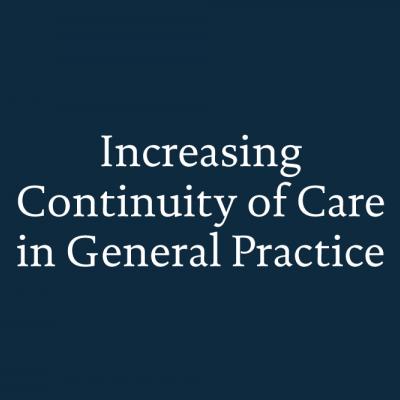About the programme
In 2019 the Health Foundation awarded five large-scale GP practices and federations grants of up to £250,000 over 18–24 months (with a six month pause in 2020 due to COVID-19) to carry out targeted quality improvement work to increase relational continuity of care.
The programme was inspired by Health Foundation research and, building on the already established evidence base on the benefits of continuity of care, sought to understand whether improvement approaches can be used to increase relational continuity of care in general practice. The programme was developed and delivered with the advice and support of the Royal College of General Practitioners (RCGP).
For this programme we commissioned a mixed methods evaluation from Mott Macdonald and also produced a quantitative descriptive analysis from the Improvement Analytics Unit (IAU).



